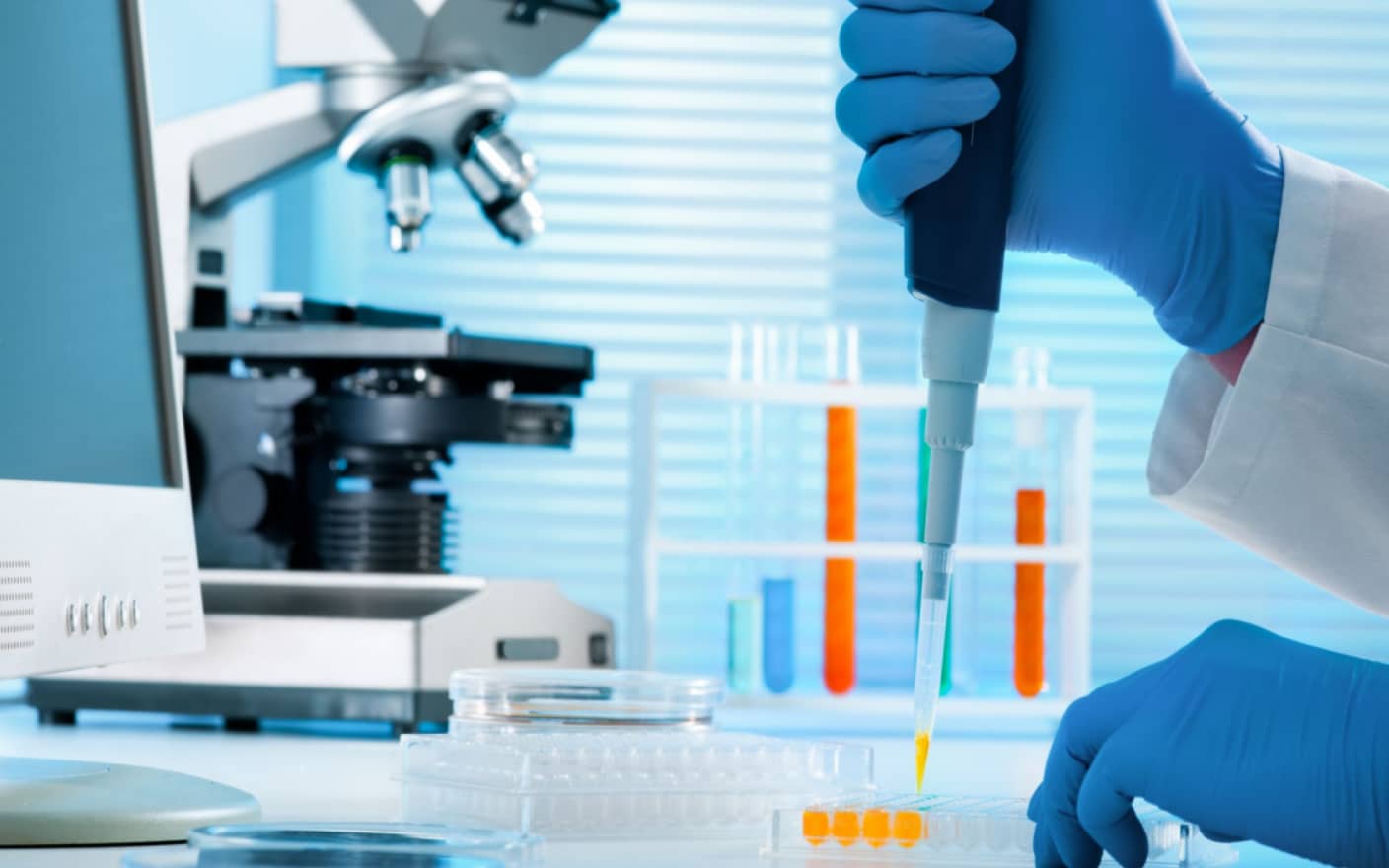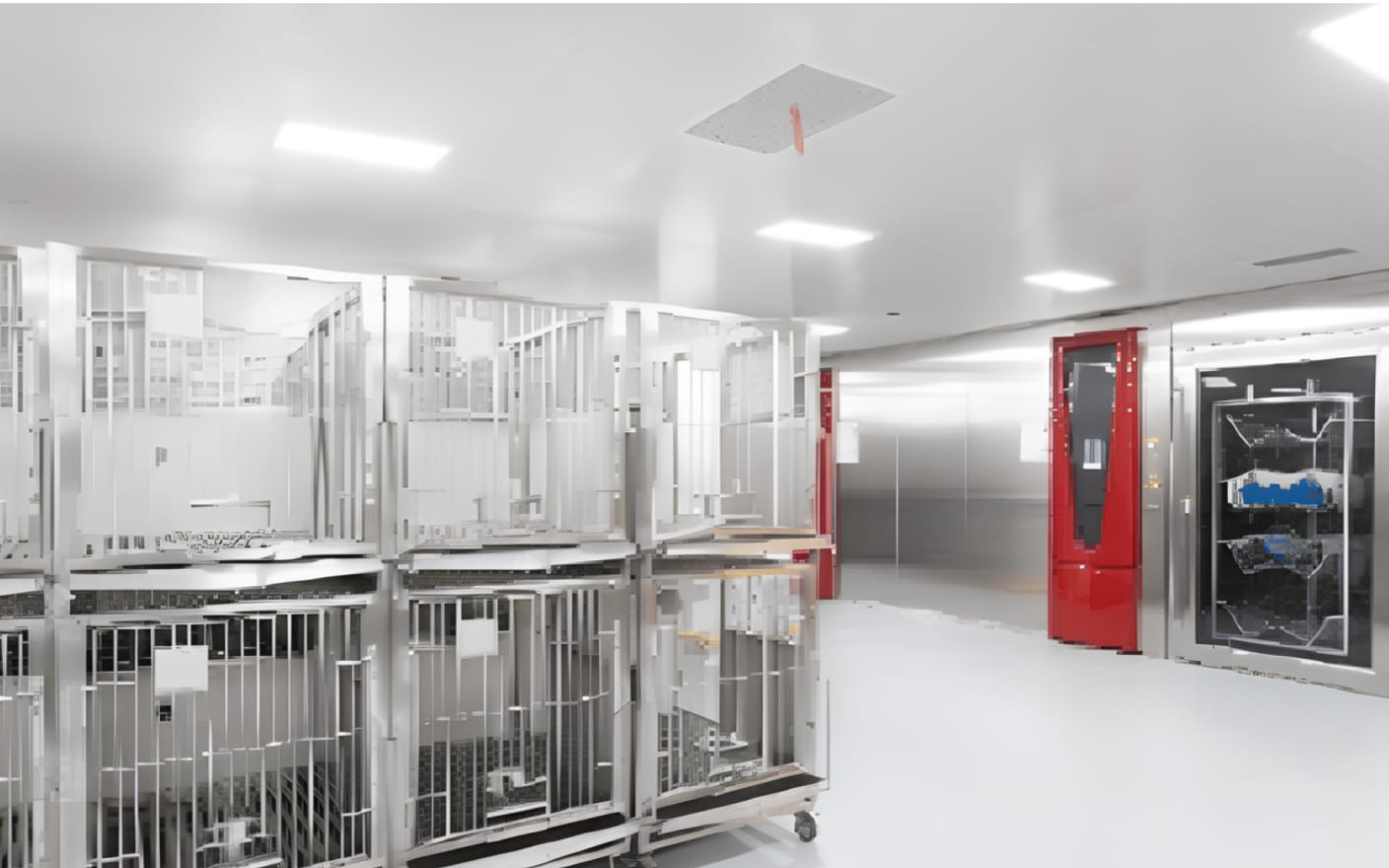Due to the convenience of administration, painlessness, relative safety, and ease of storage and transportation, oral formulations have become the preferred choice in the development of most pharmaceutical formulations. However, many orally administered drugs with high lipid solubility face challenges such as precipitation and low solubility in the gastrointestinal environment. This leads to low bioavailability, thereby hindering their therapeutic effectiveness. Statistics indicate that in the early stages of new drug screening, approximately 90% of drugs are categorized as poorly soluble.1 Their low water solubility can lead to reduced oral bioavailability and substantial inter-individual variability. Our previously published article discussed various formulation strategies to augment the in vivo exposure of poorly soluble compounds. This article focuses on a novel formulation strategy, the self-emulsifying drug delivery system (SEDDS), and its application to improving the oral bioavailability of lipophilic compounds.
Components and advantages of SEDDS
1.1 Composition of SEDDS
SEDDS is a liquid or solid formulation composed of an oil phase, non-ionic surfactants, and co-surfactants. When introduced into water or simulated gastric fluid (SGF) and gently stirred under conditions typical of the gastrointestinal tract (usually at body temperature 37 °C), the SEDDS spontaneously emulsifies into droplets with a particle size of 100–500 nm.
1.2 Advantages of SEDDS
Self-emulsifying technology, considered an advanced formulation approach, has well-established theoretical foundations and has been successfully applied to marketed drugs. This technology enables lipophilic drugs to spontaneously form a stable microparticle system in water, enhancing their dissolution and dispersion capabilities. This simultaneously promotes the passage of the drug through the mucous membrane of intestinal epithelial cells, thereby improving bioavailability. SEDDS, as a strategy to improve the bioavailability of orally administered drugs, has the following features:
Increasing intragastric solubility of drugs;
Inhibiting drug precipitation within the gastric solution;
Prolonging Gastrointestinal retention;
Prolonging the stability of the drug in the gastrointestinal tract;
Promoting lymphatic transport;
Inhibiting the efflux transporter P-glycoprotein (P-gp);
As a drug carrier, SEDDS can be used for slow-release purposes;
Facilitating drug storage and transportation since the drug is dissolved in the oil phase.
Gao et al.2 conducted extensive studies on the in vivo absorption mechanisms of SEDDS and summarized the potential processes of drug absorption (Figure 1).

Figure 1. Schematic diagram of the intestinal absorption of SEDDS drugs3
Pathway A: Following oral administration, droplets are initially formed in the gastrointestinal lumen, undergo lipolysis, and are transported to enterocytes.
Pathway B: A small amount of the drug, influenced by the action of freely available surfactants in the gastrointestinal lumen, forms micelles. Droplets not transported through Pathway A undergo further lipolysis; both forms of drug carriers undergo collisional transfer to the glycocalyx layer, eventually entering intestinal epithelial cells.
Pathway C: Small amounts of free drugs in the intestine are transported by passive diffusion to enterocytes.
Pathway D: Triglycerides from food form mixed micelles under the action of Bile acids and pancreatic lipase. A small amount of freely available drug collides with these mixed micelles and is transported to the glycocalyx layer to enter the enterocyte.
Once the highly lipophilic drugs are transported into the enterocyte, they are digested with food and form chylomicrons, which enter the lymphatic system or, ultimately, the systemic venous circulation. Drugs with moderate lipophilicity undergo collisional transfer directly into the venous system without forming chylomicrons.3
Application of SEDDS
On September 9, 2016, the first oral Paclitaxel product, Liporaxel, was approved by Korea's Ministry of Food and Drug Safety (MFDS) for treating gastric cancer. Through the application of SEDDS technology, Paclitaxel's oral bioavailability was substantially enhanced. Simultaneously, there was a marked reduction in adverse reactions among patients, such as peripheral neuropathy and allergic responses. This innovation precluded side effects associated with intravenous injection, such as extravasation and pain, thereby improving medication safety and facilitating home-based treatment for patients.
SEDDS is applied to deliver new molecular entities, such as a protective effect on peptide drugs. SEDDS has been proven effective in resisting the digestion and degradation of peptide drugs, enhancing the penetration of the intestinal mucosal gel layer and mucosal cell permeability, thereby promoting their absorption. Additionally, SEDDS is applied in recent research focused on proteolysis targeting chimera (PROTAC) drugs. Due to such drugs' high hydrophilic–lipophilic balance coefficients, self-emulsifying formulations can address the low solubility issues leading to low in vivo exposure.
The components of SEDDS are all in the non-aqueous phase. Considering the retention time of the drug in the body and its safety, the dosing volume of SEDDS should not be large; highly concentrated formulations should be developed. Due to diverse component types, finding suitable solvents and ratios takes considerable time. While SEDDS has numerous advantages, its development is a time-consuming process involving compound exploration and lacks a straightforward evaluation method.
Before screening SEDDS formulations, an assessment is required to identify compounds suitable for the SEDDS delivery system. A rapid and concise method aids researchers in making quick determinations and recognizing compounds suitable for SEDDS application.4 This method relies on the physicochemical parameters of compounds:
Poor water solubility (<10 µg/mL)
High lipophilicity (log P >3)
Relatively high solubility (>25 mg/mL) for oil or fat solubility
Formulation design and pharmacokinetic (PK) study process of SEDDS
3.1 Developmental Process
The focal point of SEDDS development is to maximize the compound's solubility in the pre-concentration solution and assess the emulsification performance after dilution with water, as the size and stability of emulsified droplets can impact compound absorption (Figure 2). The developmental process begins by determining the compound's solubility in various commonly-used excipients. The next step involves selecting components with higher solubility and combining them in suitable proportions to form a clarified concentrate. The final step includes simulated assessments in in vitro assays. Commonly used excipients include medium- and long-chain fatty acids, polyoxyethylene sorbitan esters, and polyethylene glycol series.

Figure 2. SEDDS development flowchart
HPLC, high-performance liquid chromatography; PLM, product lifecycle management; PSD, particle size distribution; SGF, simulated gastric fluid
The mechanism by which excipients in SEDDS formulations enhance bioavailability involves emulsification, permeability, and bioavailability. The oil phase can alter the biopharmacological properties of drugs and has a complex effect on the bioavailability of orally administered drugs. This includes lowering gastric emptying rates, increasing drug solubility in intestinal fluid, and inducing easier lymphatic transport of highly lipophilic drugs. However, it can affect drug absorption,5 as a single oil phase or a high oil content may result in weak emulsification. For example, soybean oil, with its slow emulsification in gastrointestinal fluids and the formation of large emulsion droplets, can hinder drug distribution and absorption.
In addition to emulsification, surfactants facilitate permeation by altering the fluidity of small intestinal epithelial cell membranes and the tight junctions between cells, thereby increasing drug membrane permeability and improving drug absorption.6 The poor solubility of many Biopharmaceutics Classification System (BCS) Class II drugs may be a substrate for transporters and metabolizing enzymes, which can result in lower bioavailability. Studies have shown that many non-ionic surfactants have inhibitory effects on P-gp,7,8 which effectively improve drug absorption. Therefore, SEDDS is often used to improve the absorption of poorly water-soluble or oil-soluble drugs in conventional formulations and has attracted much attention for improving the bioavailability of low-solubility Class II and IV drugs.
3.2 Formulation design
For Formulation design, SEDDS can be categorized into four types, depending on the components and ratios (Table 1). Classes I and II constitute early-development formulations, with larger emulsion droplets formed during evaluation. As SEDDS research has progressed, Class III SEDDS, with the addition of co-solvents, exhibits enhanced solubilization effects and allows for a corresponding reduction in the proportion of surfactants in the system. This improves the formulation's flowability, aids dispersion, and is safer. Additionally, it facilitates the formation of smaller emulsion droplets, making it more commonly used.
Type I | Type II | Type IIIA | Type IIIB | |
Lipids | 100% | 40%~80% | 40%~80% | <20% |
Surfactants | 0 | 20%~60% HLB <12 | 20%~40% | 20%~50% |
Co-solvents | 0 | 0 | 0%~40% | 20%~50% |
Table 1. Formulation design of different SEDDS
HLB, hydrophilic–lipophilic balance
3.3 Methodology for the In Vitro Evaluation of SEDDS Formulations
The in vitro dispersion test is a rapid and effective assessment method used to screen SEDDS formulation. The self-emulsification rate indicates the formulation's ability to spontaneously form stable and homogeneous microemulsions.
Evaluation methods include:
a) Visual assessment of emulsification levels9, 10;
b) The concentration of the compound was analyzed using high-performance liquid chromatography to detect the equilibrium time of self-emulsification.
c) Observation of emulsion droplet size under a microscope and using a Malvern particle size analyzer to measure particle size distribution.
Based on the SEDDS formulation design, 6–10 formulations can be rapidly screened. If the parameters of the above tests are similar across formulations, the final recommended formulation can be selected based on the stability of the SEDDS formulation in gastrointestinal fluids.
3.4 Factors influencing animal experiments and strategies
Several factors in animal experiments can influence the choice of excipients and the application of formulations in the SEDDS developmental process (Table 2).
Factor | Challenge |
Different animal species (mice and rats or dogs/monkeys) | Variations in physiological functions among different species result in differences in SEDDS emulsification and digestion processes. |
High volume of administration in animal tests | Compared to clinical trials, the administration volume in animal experiments (≥1 mL/kg) or the amount of ingested fat (≥1 g/kg) is relatively high. |
Mode of administration (force-feeding or capsule) | In semi-solid SEDDS formulations, the quantification of animal dosing or the method of administration is a challenge. |
Safety and tolerance concerns associated with a high total oil phase intake | Long-term oral administration to animals poses ongoing challenges related to tolerance and safety. |
High doses in DRF experiments or pre-toxicity experiments (300–500 mg/kg or higher) | A concentration of ≥100 mg/mL in the formulation causes an increased risk of precipitation during in vivo emulsification. |
Effects of food | Different foods from various manufacturers or formulations containing different triglyceride levels can influence the distribution and digestion of the formulation. |
Table 2. Important factors in animal experiments in the SEDDS developmental process
DRF, Drug Revolving Fund
In response to the challenges posed by the factors mentioned above, several strategies can be employed:
To address emulsification challenges in SEDDS and reduce the intake of the total lipid phase, scientists conducted research building upon SEDDS, resulting in S-SEDDS (a supersaturable self-emulsifying drug delivery system). This involves pre-diluting SEDDS with a solution containing inhibitors to achieve supersaturation, facilitating advanced emulsification and dispersion.
Designing dosages based on the tolerance of different species to varying ratios of excipients;
Formulations are selected using fasted/fed state simulated gastric fluid (FaSSGF/FeSSGF) or fasted/fed state simulated intestinal fluid (FaSSIF/FeSSIF) emulsification tests, simulating human or canine conditions, to predict potential precipitation in advance;
The impact of food can be considered by studying existing food formulations, defining food based on clinical guidance principles, and designing high-calorie feeds, regular feeds, and low-calorie feeds suitable for different species according to caloric content to meet the design requirements of different experiments.
Concluding
Although SEDDS faces various challenges during development, especially considering that many SEDDS formulations exhibit sound self-emulsification effects only under specific phase combinations, extensive screening work is required for exploration. SEDDS continuously optimizes formulation development technology and extends to the production of smaller-sized, self-nano-emulsion formulations; more stable and easily-producible, self-emulsifying solid formulations; and the incorporation of excipients, such as hydroxypropylmethylcellulose (HPMC), to inhibit precipitation, ensuring the safer application of supersaturated self-emulsifiers. As research evolves, self-emulsification technology will be better applied to meet the challenges of the absorption of drugs for the benefit of patients.
DMPK Service Department of WuXi AppTec has the capability for preclinical self-emulsifying formulation development and has accumulated extensive experience in SEDDS formulation in screening and testing evaluations. A substantial amount of data on the safety of various lipids and the combined application of surfactants has been accumulated, aiding in designing single-dose and long-term, multiple-dose administration experiments in animals to provide a better service to clients.
Talk to a WuXi AppTec expert today to get the support you need to achieve your drug development goals.
Authors: Xin Li, Chao Zhang, Shoutao Liu
Committed to accelerating drug discovery and development, we offer a full range of discovery screening, preclinical development, clinical drug metabolism, and pharmacokinetic (DMPK) platforms and services. With research facilities in the United States (New Jersey) and China (Shanghai, Suzhou, Nanjing, and Nantong), 1,000+ scientists, and over fifteen years of experience in Investigational New Drug (IND) application, our DMPK team at WuXi AppTec are serving 1,500+ global clients, and have successfully supported 1,200+ IND applications.
Reference
1. M. Sherry Ku. Use of the Biopharmaceutical Classification System in Early Drug Development. The AAPS Journal. 10 (1): 208-212(2008).
2. GaoP, MorozowiehW. Development of supersaturatable self-emulsifying drug delivery system formulations for improving the oral absorption of poorly solubledrugs [J]. Expe~OpinDrugDe- Ziv, 2006, 3(1): 97-110.
3. Yaorong Feng, Qiaoyang Cheng, Fanzhu Li, Progress of self-emulsifying drug delivery system [J]. 2007, 34(4): 280-281
4. Xue-Qing Chen, Olafur S. Gudmundsson, and Michael J. HagemanApplication of Lipid-Based Formulations in Drug Discovery. J. Med. Chem. 2012, 55, 7945
5. Gershanik T, Benita s Self—dispersing lipid formulations for improving oral absorption of lipophilic drugs[J]. Eur J Pharm Biopharm, 2000, 50(1): 179-188.
6. Kommuru TR, Gurley B·Khan MA. et a1. Self-emulsifying drug delivery systems(SEDDS) of coenzyme Q10: formulation development and bioavailability assessment[J]. Int J Pharm, 2001, 212(2): 233-246.
7. Al-Mohizea AM, Zawaneh F, Alam MA, et al. Effect of pharmaceutical excipients on the permeability of P-glycoprotein substrate [J]. Journal of Drug Delivery Science and Technology, 2014, 24(5): 491-495.
8. Cornaire G, Woodley J, Hermann P, et al. Impact of excipients on the absorption of P-glycoprotein substrates in vitro and in vivo [J]. Int J Pharm, 2004, 278(1): 119-131.
9. Gershanik T, Benzeno S. Beniton S Interaction of self-emul-sifying lipid drug delivery system with the evened rat intestinal nlaco%t as a ruction of droplet size and surface charge[J].
Pharm Res, 1998, 15(6): 863-869.
10. Griessinger J, Du¨nnhaupt S, Cattoz B, et al. Methods to determine the interactions of micro- and nanoparticles with mucus. Eur J Pharm Biopharm 2015.
Related Services and Platforms




Stay Connected
Keep up with the latest news and insights.











